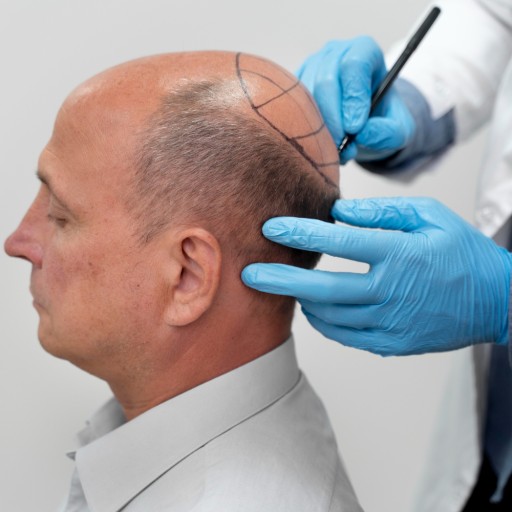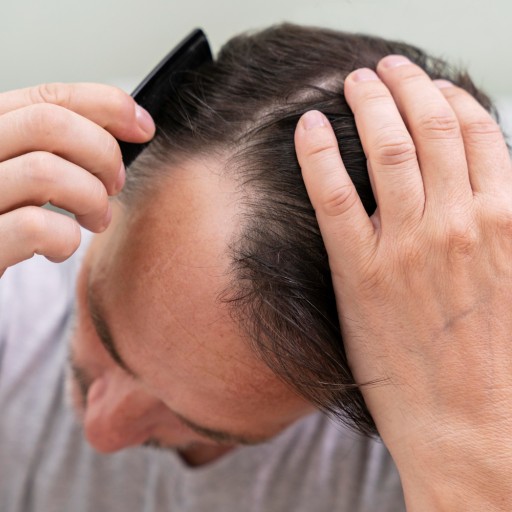Hair Transplant
3 results foundHair Transplant: A Complete Guide on Hair Restoration and Gaining Self-Esteem
Hair loss has always been a problem that makes both men and women take great blows to their self-esteem and body image. However, today, medical science can assure the availability of a hair transplant operation. Hair transplanting has undergone a wide change from its earlier stages and provides very natural and long-lasting results. This article describes what hair transplant surgery is, techniques used, benefits, recovery process, and more.
What is a Hair Transplant?
A hair transplant is a surgical procedure that moves the hair follicles from one part of the body, usually from the back or sides of the head, to an area that contains thinning or lost hair. This is usually performed to treat male and female pattern baldness, receding hairlines, and all other forms of hair loss caused by genetics, aging, or medical conditions.
The main purpose of hair transplantation is to give the appearance of natural hair growth in regions where a person has lost their hair. The hair transplant is permanent since the hair follicles are resistant to DHT, which causes baldness.
Various Hair Transplant Techniques
Several hair transplantation techniques have been developed over time, each with some advantages. The two most commonly used techniques today include:
FUE stands for Follicular Unit Extraction. It is a minimally invasive technique where hair follicles are individually taken from the back of the head and then transplanted into the thinning or balding areas. FUE doesn't require large incisions, and there is minimal scarring, hence making it an ideal choice for many patients. Recovery time is generally faster in FUE compared to other older techniques.
FUT: This is commonly known as Follicular Unit Transplantation and includes the removal of skin from the donor site, normally from the back of the head. It then extracts hair follicles from this strip. They are then transplanted into the recipient area. FUT usually leaves a linear scar in the donor area but sometimes is the only choice for such patients who need to get a big number of grafts during one session.
Both methods yield great results, and the selection between the two is based on the patient's hair loss pattern, the extent of hair loss, and the surgeon's recommendation.
Why Choose a Hair Transplant?
Hair transplantation surgery offers a host of advantages to individuals suffering from hair loss. Here are some of the key reasons why many opt for the procedure:
Permanent Solution: Hair transplants offer long-lasting results. The hair follicles that are transferred grow naturally and continue to thrive in their new location, providing permanent hair restoration.
Natural Results: Modern hair transplantation techniques, especially FUE, produce results that are natural in appearance and feel. The hairline is designed to be in harmony with the patient's facial features, and the growth pattern of the transplanted hair follows the natural direction of hair growth.
Improved Confidence: Hair loss can affect one's self-esteem and generally impact their body image. A successful hair transplant can restore a fuller head of hair, which may considerably improve the patient's confidence and overall appearance.
Minimal Maintenance: Unlike other hair restoration treatments, including wigs or hairpieces, a hair transplant requires little maintenance. Once the hair from the transplant has grown in, it acts like natural hair, with no requirement for continued treatments or products.
The Hair Transplant Surgery: What to Expect
Before a hair transplant is performed, the candidate should consult a qualified hair transplant surgeon who will determine whether the person is a suitable candidate. The surgeon will analyze the hair loss pattern of the patient during this consultation, discuss the desired outcome, and select the most suitable technique.
The general steps involved in the hair transplant procedure include:
Preparation: The donor site, usually the back or sides of the head, is shaved, and local anesthesia is administered to render the area insensitive. The patient remains awake during the procedure but should not feel any pain.
Extraction: According to the type of chosen technique, hair follicles are extracted either individually (FUE) or through a strip of tissue (FUT).
Transplantation: Carefully placing the extracted follicles into small incisions within the recipient area, usually where thinning or no hair exists, is done. The surgeon will go to great lengths to make sure that the transplanted follicles are in the correct position according to the natural hairline and growth pattern.
Finishing Touches: After the procedure is over, the patient may be given post-operative instructions and medications to manage any discomfort.
It is generally several hours in duration, and the patient is often able to return home on the same day.
Hair Transplant Recovery
The rate of recovery after hair transplantation surgery is generally quite rapid; however, this does vary among individuals and depending on the method of transplantation employed. In general, the following guidelines may be considered:
Early Healing: After the surgery, some swelling and redness with minor pain may occur in the transplantation and donor sites. In general, these symptoms disappear in a few days.
Shedding: It is not out of the ordinary to have transplanted hair fall off within weeks starting from the procedure date. This is within the natural growth cycle of hair, so one should not bother about this. New growth usually starts after some months.
Follow-up Appointments: For monitoring and progress, a number of appointments will have to be made with the individual's surgeon. The surgeon will indicate how to avoid things that will impact healing, such as too much sun exposure or high levels of intense exercise.
Time to See Results: The transplanted hair starts growing in after several months, though it might be almost one year before the end results are finally seen. As days go by, these transferred hair will get thicker, allowing them to grow easily, just like other growing hairs.
Possible Risk and Side Effects
While hair transplant surgery is safe, like every other surgery, there are possible risks and side effects. They may include the following:
Infection: There is a slight possibility of an infection at the donor site or recipient sites. These possibilities can be minimized if post-operative care instructions are taken well.
Scarring: FUT leaves a linear scar in the back donor area, but, when surrounded by hair, usually the scarring is well camouflaged. In addition to the linear scar in FUE, there are only pinhead-sized dot-like scars. These are relatively easy to hide.
Irregular Growth: Sometimes, transplanted hair grows unevenly and can result in uneven growth. This could get corrected with additional treatment/s if needed.
Numbness: Some patients experience temporary numbness in the donor or recipient areas. This is usually short-lived and resolves over time.
Shock Loss: It’s common for existing hair around the transplanted area to shed temporarily after the procedure. This is called "shock loss" and is usually a temporary condition.
Cost of a Hair Transplant
The cost of hair transplantation may, therefore, vary greatly considering factors such as the experience of the operating surgeon, location of the facility, the number of grafts one needs, and the method applied. On average, hair transplant treatments can range in cost from $4,000 to $15,000 or even more.
Keep in mind that cosmetic procedures such as hair transplants are most often not covered under the typical scope of most insurance plans; therefore, the costs may be completely out of pocket.
Is a Hair Transplant Right for You?
Hair transplantation can be considered appropriate for individuals who have failed to get desired results with other forms of hair restoration. The best candidate for hair transplantation has sufficient donor hair, which is commonly located at the back and sides of the head, and a realistic expectation about post-transplant results.
If one is considering hair transplantation, it is important to consult a board-certified surgeon who specializes in hair restoration. They can assess your particular situation, discuss your goals, and determine the best treatment plan for you.
Conclusion
Hair transplant surgery is a life-changing procedure for those who are experiencing hair loss and want a permanent, natural solution. By choosing a skilled surgeon and understanding the procedure, risks, and recovery process, individuals can enjoy fuller, healthier hair and restore their confidence. If you’re considering a hair transplant, take the first step by consulting with a qualified professional to see if this option is right for you.



